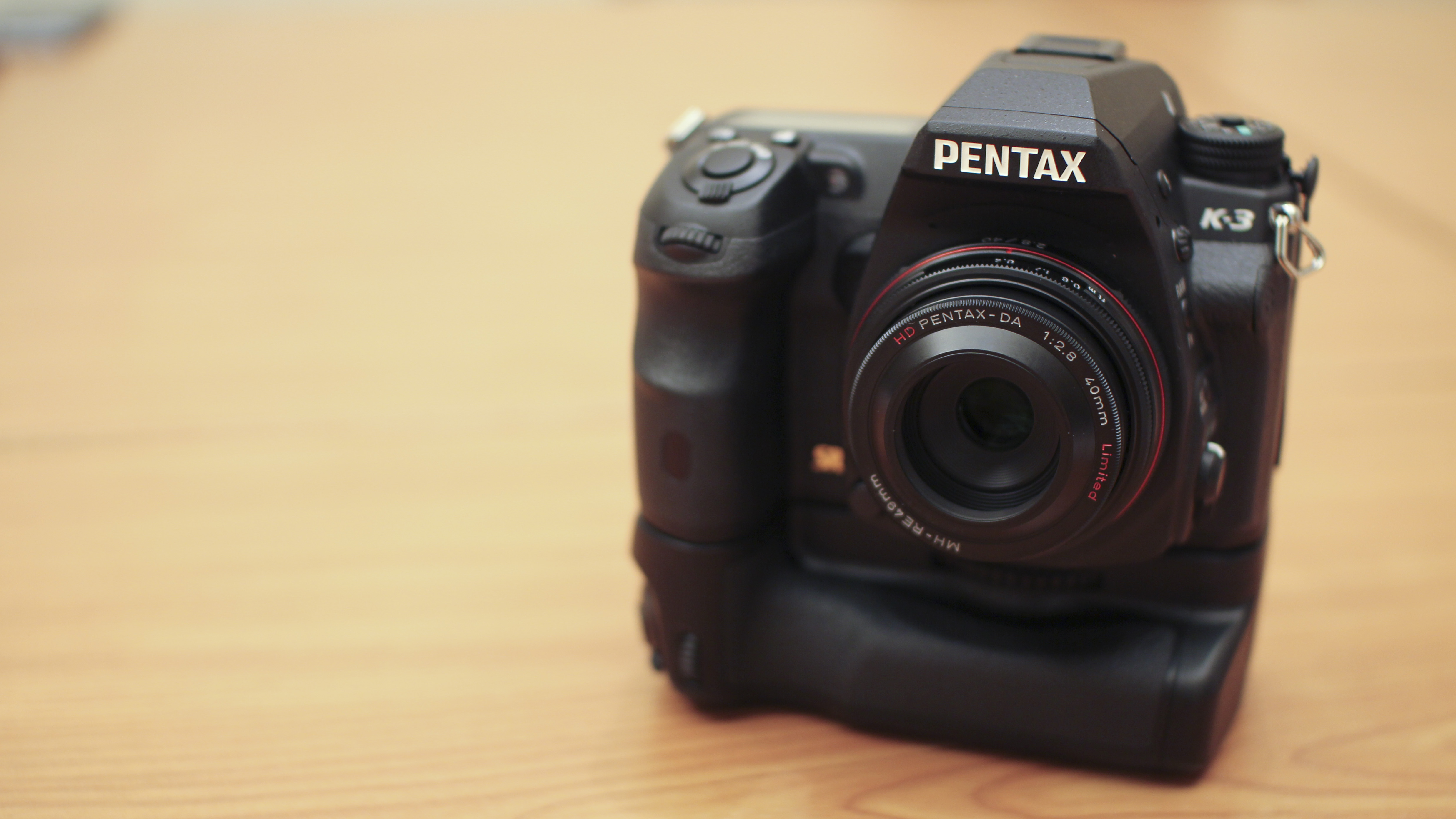Why you can trust TechRadar
One of Pentax's key selling points of this and other DSLRS in its line-up is the weatherproofing. The K-3 features the same high-quality magnesium shell as found in the K-5 II, and as such has a rugged and solid feel, which seems as if it could more than withstand a few knocks and scrapes.
The K-3's grip protrudes pretty far from the body and gives excellent purchase, especially when holding the camera one handed. The covering on the camera also helps and we imagine that the coating will come in especially handy during cold or wet weather.

Design-wise, the K-3 is actually very similar to the K5-II, with the usual rear and front dials used for changing aperture and shutter speed, depending on the mode you're in. The rear dial alters aperture, while the front dial alters shutter speed in the default settings.
Fans of control buttons will enjoy using the K-3 as there is a veritable mix of them. For instance, a conveniently placed ISO button can be found near the on/off switch on the top of the camera.

A small switch on the back of the camera enables you to quickly flick between stills and video mode. Once in video mode, a red button can be pressed to start recording. While in stills mode, the red button is used to access the K-3's Live View mode.
There are also buttons on the left-hand side of the front of the camera, which is fairly unusual. Here you'll find a raw button and an AF mode. The latter is used to change the AF point selection mode. Once you've changed it to Selectable AF point, you then need to press another button on the back of the camera and use the arrow keys to navigate around the screen.

One of the annoyances of the K-5 II was the way in which metering was altered – via a switch that could be accidentally knocked. On the K-3, a simple button is used to make changes.
Sign up for breaking news, reviews, opinion, top tech deals, and more.
A mode dial on the left-hand top side of the camera is used to switch between the different shooting modes available, including fully manual mode, semi-automatic mode and so on. There is space here for up to three groups of user defined settings, which is useful.
Another useful feature is the variable lock around the mode dial, which means that if you prefer, you can have it so a button in the middle of a mode dial must be pushed in before you can change settings. Alternatively you can have it so the dial turns without impediment.

I found the green button on the back of the camera particularly useful as tapping it brings back default settings. For instance, if you've altered the exposure compensation, holding down the EV button and hitting the green button will centre it back to 0EV. Similarly, if you've altered the sensitivity (ISO), hitting it will reset it back to automatic.
To change the autofocus point, you'll first need to navigate to AF point selection mode by pressing a button on the side of the camera. Once this has been selected, you then use the four navigational keys to select the point you require. The four navigational keys here also double up as direct access keys to functions such as white balance and flash. To make these keys function in this way, you'll first need to hold down the OK button in the centre of the pad.
The K-3 offers a 100% field of view optical viewfinder, which is relatively unusual at this price point. It's a nice, bright and clear viewfinder to use, with a good amount of shooting parameters displayed to help when shooting. On the screen, the display switches if you hold the camera in portrait format, a small, but appreciated touch.

Amy has been writing about cameras, photography and associated tech since 2009. Amy was once part of the photography testing team for Future Publishing working across TechRadar, Digital Camera, PhotoPlus, N Photo and Photography Week. For her photography, she has won awards and has been exhibited. She often partakes in unusual projects - including one intense year where she used a different camera every single day. Amy is currently the Features Editor at Amateur Photographer magazine, and in her increasingly little spare time works across a number of high-profile publications including Wired, Stuff, Digital Camera World, Expert Reviews, and just a little off-tangent, PetsRadar.
